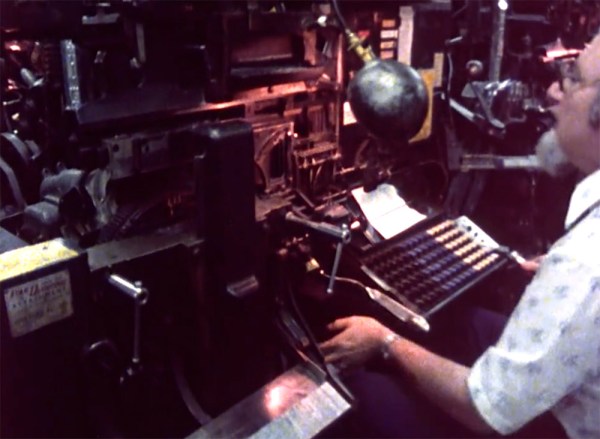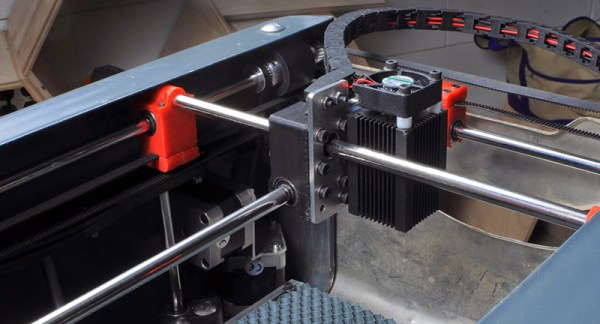The short film, Farewell — ETAOIN SHRDLU, produced in 1978 covers the very last day the New York Times was set for printing in the old way, using hot metal typesetting.
We’ve covered the magic of linotype machines before, but to see them used as they were in their prime is something else. They saw nearly a hundred years of complete industry dominance. Linotype machines had entire guilds dedicated to their use. Tradesmen built their lives around them. For some of us we see the rise and fall of technology as an expected thing. Something that happens normally, sometimes within spans that cover only a few short years. Yet it’s still a strange thing to see a technology so widely used shut down so completely and relatively rapidly.
To make it even stranger, the computer that replaced the linotype machines is so alien to the technology used today that even it is an oddity. In the end only the shadow of the ‘new’ technologies — showcased as state of the art in this video — are still in use. Nonetheless it’s important to see where we came from and to understand what it means to innovate. Plus, you never know when you see an old idea that’s ready for a bit of refurbishment. Who knows, maybe part of the linotype’s spirit is ready to be reborn, and all it takes is a clever hacker to see it.
Oh, and that title — ‘etaoin shrdlu‘ — is the linotype equivalent of ‘qwerty’. The first two columns of keys on the linotype machine make up those two words.
Continue reading “The Haunting Last Day Of Hot Metal Typesetting At The New York Times”













